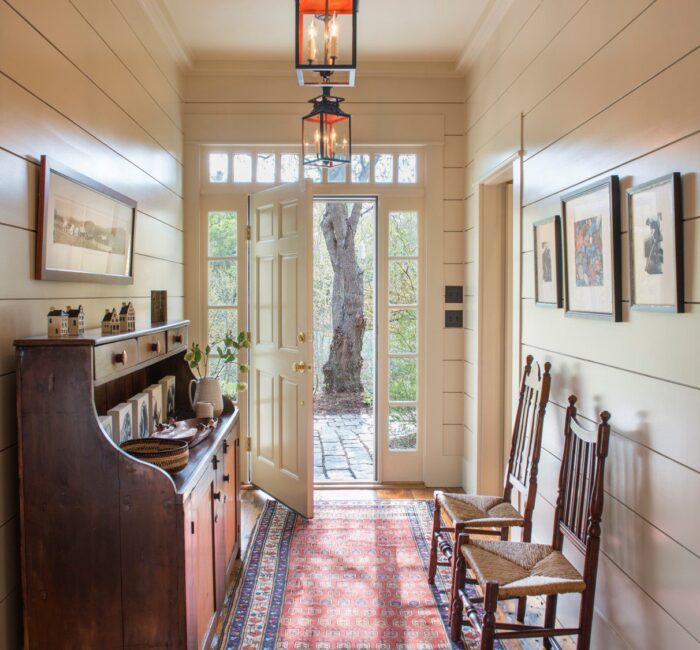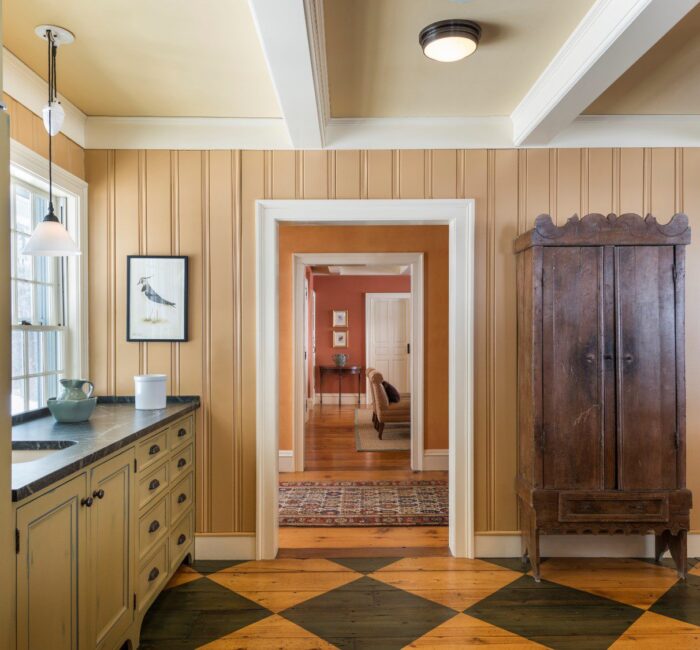By Armita Mirkarimi, Vermont Standard Staff Writer
Ann Shriver Sargent has been named a 2025 inductee into the New England Design Hall of Fame, a recognition the Norwich-based interior designer describes as an affirmation of the philosophy she’s carried throughout her more than 30-year career: that a home should endure.
“To have that philosophy recognized in this way is deeply meaningful,” Sargent told the Standard.
Sargent will be formally inducted Nov. 6 at Boston’s SoWa Power Station. The New England Design Hall of Fame is the region’s most prestigious design industry honor, celebrating architects, interior designers, landscape designers, builders, and specialists whose careers have significantly advanced residential design.
Sargent told the Standard in an interview this week that her path to design began while working at the Design Center in Boston during college. With a degree in art history and an opportunity to take on a project, she jumped in, learning organically by building relationships with tradespeople and artisans who taught her how to execute her ideas.
“You need a lot of people that produce the stuff that’s in your head,” she said. “It’s one thing to have a vision, and then you have to understand how to execute. When you start out, you don’t really know how, but if you hire the right people, they show you.”

Ann Shriver Sargent
She describes herself as a conductor with artisans forming the orchestra. “Without all those people, being a conductor doesn’t do too much good,” Sargent said.
Living in a beautiful old house when she started out allowed her to absorb the benefits of good balance, proportion, and craftsmanship. She takes her first clues from architecture and is inspired by things people make with their hands. “When a piece of wood is hand planed, it’s got more motion and interest to me than a piece that is perfectly sanded,” she said.
Sargent says she focuses on spaces that function well and make people feel comfortable, creating a sense of hospitality. Her approach differs from design meant to wow viewers. “Some places you just feel kind of great to be in them because you’re like, this place is so cool, but you don’t really feel comfortable or inspired as much as in awe,” she said. “There’s a place for that kind of design. It’s not really what I do.”
Instead, she likes spaces to reveal themselves over time. “I think that’s really nice to have little surprises,” she said. She doesn’t track one idea through a whole building but rather a sensibility. “If you have a house with five bathrooms, they don’t all look alike. They all are interesting in the same flavor, but you don’t think you’re in the same room.”
Time living abroad, including in Paris, has impacted her work. The patterns carved into Jain temples and European buildings, where stair treads have been worn by centuries of footsteps, speak to her aesthetic. “We’re such a new country relatively, and we’ve over time kind of perfected the machine,” Sargent said. “Very few people get to experience having stairs that are uneven. But in my mind, you lose something when you don’t have that patina and that touch of the life that a building or a space has lived with over time.”
In New England, she draws inspiration from the region’s colors, particularly fall’s vivid palette. “Last week, the colors on my road — you just can’t even believe it, the colors are so amazing,” she said, describing reds that are almost hot pink next to yellow when light dapples through the underbrush.
She approaches design with personal meaning at its core. When visitors ask about objects in her home, she shares their stories. “They go, ‘Is everything here, like on your bookshelf? Do you have a story about everything?’ And I looked at it, and I thought, ‘Yes, don’t you?’” she said.
Whether working in a minimalist style or a maximalist approach, she believes spaces should be rooted in good materials, thoughtful light, and balance. Small details make the difference — she noted the example of cutting grooves in a stone kitchen counter so water doesn’t drip on the floor when dishes drain.
“A lot of people think there’s a secret to it,” Sargent said. “It’s not really a secret. It’s just thinking about it.”
An experienced designer brings attention to both the big vision and minute detail. “Pull the lens way back, come up with a big vision, and then execute on it to the minute detail,” she said. “All the minute details that make it easy to be in the space and live in the space.”
For years, Sargent has worked with Twin Farms, the iconic resort in Barnard. “From a design standpoint, it brings together all the things I really care about — hospitality and function and really intriguing design things where you could spend days and days and still not experience all the little elements,” she said.
Many of those elements were delivered by original designer Jed Johnson, who died shortly after the resort opened. “Being able to participate in maintaining it and adding to it over the years, that’s been a really fabulous project,” Sargent said.
She has also done many renovations in the Woodstock area, breathing new life into older houses while respecting their bones and history.
Now, Sargent is focused on mentoring her team and the next generation of designers. “I want them to bring their personality and their point of view into projects because it keeps it fresh,” Sargent said. She wants to help young designers build sustainable careers in the arts while advocating for artisans to be properly paid for their talent.
Reflecting on her legacy, Sargent said it’s shared with the clients who trusted her vision. “If, decades from now, my work still brings people a sense of ease and belonging, then I will have done it well.”

